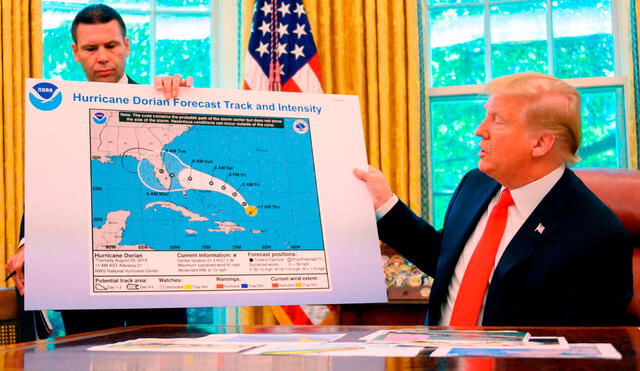Trump administration lays off 800 employees at federal weather and ocean agency
The Trump government’s decision to dismiss over 800 NOAA workers raises concerns about the nation’s ability to forecast hurricanes, tornadoes, and other extreme climate events amid growing climate challenges.

Donald Trump administration’s efforts to downsize state agencies have now hit the National Oceanic and Atmospheric Administration (NOAA), with reports indicating that nearly 800 staffers have been targeted for termination. This wave of layoffs, primarily affecting employees in probationary status, has been described as part of a larger plan outlined in Project 2025. The office, responsible for weather forecasting, climate research, and disaster prediction, could lose over a thousand members by the end of the week, according to sources close to the entity.
As the atmosphere crisis accelerates and extreme conditions become more frequent, critics argue that these terminations will further weaken the nation’s ability to forecast hurricanes, tornadoes, and other life-threatening situations. The job cuts are not only a blow to the agency's operational capacity but also raise concerns about the future of crucial environmental research that impacts the safety of American citizens.
How do recent layoffs at NOAA impact the agency's critical research and forecasting capabilities?
The decision to reduce staff at NOAA under the Trump leadership has raised concerns about the future of atmospheric outlook and climate study. Around 800 workers were let go, with more terminations expected. “I enjoy meteorology because weather affects everyone, and there’s always so much to learn,” said Andrew Hazelton, a researcher at the Hurricane Research Division, who was among those dismissed. Hazelton's role involved evaluating typhoon estimates and improving storm models used by the National Hurricane Center.
The reductions have severely impacted units responsible for hazard projection, especially in severe climatic occurrences including tropical systems and violent tempests. Zachary Labe, a modeler affected by the cuts, explained his function: “My job was to strengthen NOAA’s use of machine learning and AI for subseasonal-to-decadal weather and climate prediction.” As destructive natural disturbances increase due to the climate crisis, these terminations threaten NOAA’s ability to forecast accurately, putting public safety at risk across the nation.
Which NOAA divisions are most affected by the reductions and what does this mean for the future?
The recent layoffs at NOAA have left critical divisions struggling to maintain their operations, especially those involved in monitoring natural disasters. The Pacific Tsunami Warning Center, the Great Lakes Environmental Research Laboratory, and the sector in charge for developing were all significantly impacted. These departments play a key role in forecasting extreme weather incidents, such as tsunamis, hurricanes, and severe storms, and their downsizing will likely reduce NOAA’s capacity to predict and respond to such events accurately.
With these sections losing valuable personnel, the effectiveness of the agency’s mission to protect lives and property is now at exposure. The loss of experts in tsunami warnings and conditions modeling, crucial in today’s increasingly volatile climate, may undermine the nation’s ability to prepare for and mitigate the effects of natural disasters. As the crisis intensifies, the cuts to NOAA’s workforce could have long-lasting consequences for emergency readiness and community protection.












